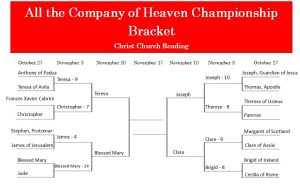
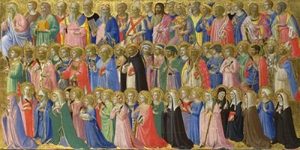
ARE YOU READY TO CAST YOUR VOTE IN THE MOST SAINTLY TOURNAMENT OF THEM ALL?

Welcome to the 2024 All The Company Of Heaven Saintly Championships! For those of you just joining us, check out our Saint’s bios and our info sheet below.
We’re on Week 3 already – Teresa bested Christopher, the Blessed Mary showed James who’s the boss, Joseph claimed victory over Therese, and Clare edged Brigid out! Which Saint will reign supreme next time? The only way to know is to vote – see you in church!
MEET OUR COMPETITORS
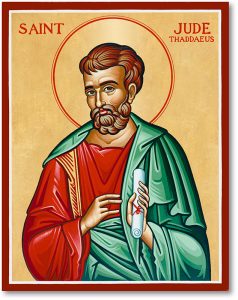
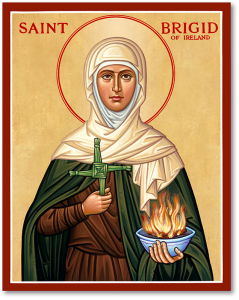
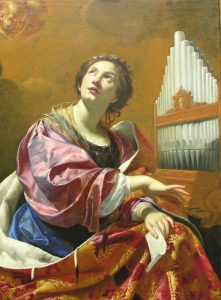
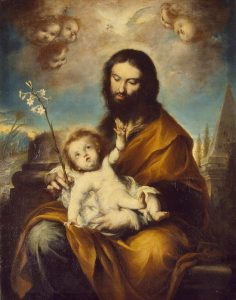
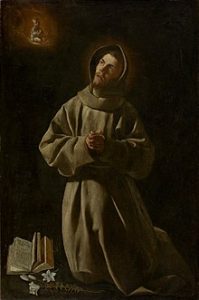
Anthony of Padua (June 13)
St. Anthony of Padua is one of the Catholic Church’s most popular saints. Anthony was born and raised by a wealthy family in Lisbon, Portugal, and died in Padua, Italy. Noted by his contemporaries for his powerful preaching, expert knowledge of scripture, and undying love and devotion to the poor and the sick, he was one of the most quickly canonized saints in church history, being canonized less than a year after his death. He was proclaimed a Doctor of the Church by Pope Pius XII on 16 January 1946. (keep reading about Anthony)
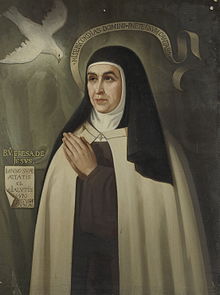
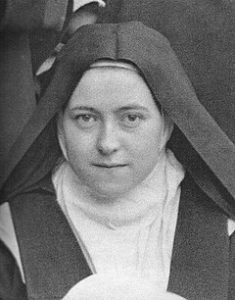
Therese of Lisieux (September 30)
Thérèse of Lisieux (2 January 1873 – 30 September 1897), was a French Catholic Discalced Carmelite nun who is widely venerated in modern times. Therese has been a highly influential model of sanctity for Catholics and for others because of the simplicity and practicality of her approach to the spiritual life. She is one of the most popular saints in the history of the church, although she was obscure during her lifetime. (keep reading about Therese)
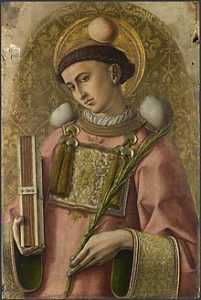
Stephen, Deacon and Protomartyr (December 26)
All that we know about Stephen the Protomartyr (that is, the first martyr of the Christian Church) is found in chapters 6 and 7 of the Book of Acts. According to the Acts of the Apostles, he was a deacon in the early church at Jerusalem who angered members of various synagogues by his teachings. Accused of blasphemy at his trial, he made a speech denouncing the Jewish authorities who were sitting in judgment on him. (keep reading about Stephen)
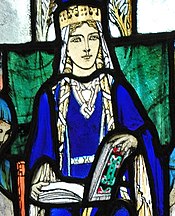
Margaret of Scotland (November 16)
Margaret (born c. 1045) was the granddaughter of Edmund Ironside, King of the English, but was probably born in exile in Hungary, and brought to England in 1057. Also known as Margaret of Wessex, she was Queen of Alba from 1070 to 1093 as the wife of King Malcolm III. Margaret was a very pious Christian, and among many charitable works she established a ferry across the Firth of Forth in Scotland for pilgrims traveling to St Andrews in Fife, which gave the towns of South Queensferry and North Queensferry their names. (keep reading about Margaret)
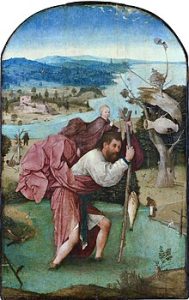
Christopher (July 25)
Saint Christopher is one of the most popular Catholic Christian heroes of the Faith. The most famous legend connected to this saint recounts that after converting to Christianity, he devoted his life to carrying travelers across a river. One day he carried an unknown young boy across a river after which the boy revealed himself as Christ. Because of his help to travelers, he became the patron saint of travelers. (keep reading about Christopher)

Mary, Mother of our Lord (August 15)
Mary was a first-century Jewish woman of Nazareth. The honor paid to Mary, the virgin mother of Jesus Christ our Lord and God, goes back to the earliest days of the Church. Indeed, it goes back further, for even before the birth of her Son, Mary prophesied, “From this time forth, all generations shall call me blessed.” (keep reading about Blessed Mary)
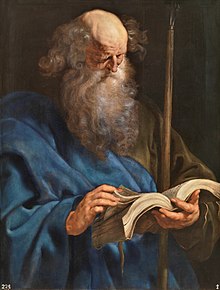
Thomas, the Apostle (December 21)
The Apostle Thomas (Hebrew or Aramaic for “twin”) was also called “Didymus” (Greek for “twin”). Thomas is commonly known as “Doubting Thomas” because he initially doubted the resurrection of Jesus Christ when he was told of it (as is related in the Gospel of John); he later confessed his faith on seeing the places where the wounds had healed on the body of Jesus after the crucifixion. (keep reading about Thomas)
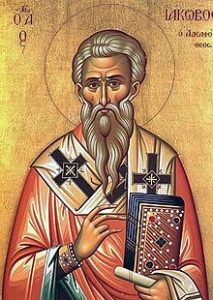
James of Jerusalem (October 23)
James of Jerusalem is referred to in the New Testament as the brother of Our Lord Jesus Christ. He was the first leader of the Jerusalem Church of the Apostolic Age. (keep reading about James)
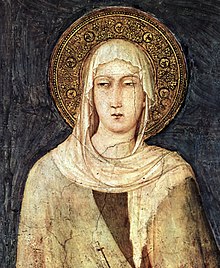
Clare of Assisi (August 11)
Clare Offreduccio, born in 1194, was the daughter of a wealthy family in Assisi. Inspired by the teachings of St. Francis, she founded the Order of Poor Ladies, a monastic religious order for women in the Franciscan tradition. The Order of Poor Ladies was different from any other order or convent because it followed a rule of strict poverty. Clare wrote their Rule of Life, the first set of monastic guidelines known to have been written by a woman. (keep reading about Clare)
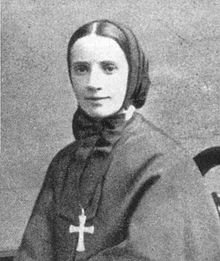
Frances Xavier Cabrini (November 13)
The youngest of thirteen children, Frances Cabrini was born on July 15, 1850 in a small village called S’ant Angelo Lodigiano near the city of Milan, Italy. Also known as Mother Cabrini, she was a Roman Catholic nun. She founded the Missionary Sisters of the Sacred Heart of Jesus, a religious institute that was a major support to her fellow Italian immigrants in the United States. Her congregation provided education, health care, and other services to the poor. (keep reading about Frances)
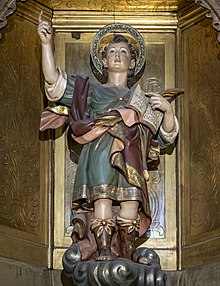
Pancras of Rome (May 12)
We have no reliable historical information about this martyr. Legend tells us he was born at the end of the third century and brought up by an uncle in Rome after the death of his parents. They were converted to Christianity, and after his uncle died, Pancras was brought before the authorities during the persecution of Christians by Emperor Diocletian, and was beheaded after he refused to sacrifice to the Roman Gods. (keep reading about Pancras)
All the Company of Heaven Rules
Nominationtide – October 20th
On this day you will be able to nominate one saint that you want to be part of “All the Company of Heaven Championship”
Who can I nominate?
To ensure your SUCCESSFUL nomination, please note the Nominationtide Rules & Regulations, which reside in a scary corner of the undercroft of Christ Church.
-
The nominee must, in fact, be dead.
-
The nominee must be on the official calendar of saintly commemorations of some church. The most readily available list is on pages 19-30 of our Book of Common Prayer.
-
We will accept only one nominee per person.
-
The only way to nominate a saint is by writing their name on a piece of paper and placing it in the Heavenly Bucket on the table near the Orrick Door. This bucket will be there on October 20th with the nomination ballots.
How will I know about the sixteen saints who make the bracket?
There will be a website detailing each of the sixteen saints with pictures and biographies.
What is the schedule of voting?
-
On October 27th you will vote in the first round which will pit the sixteen chosen saints in one on one competition (see the bracket).
-
On November 3rd the saintly field will be down to 8 so you will vote on four matchups.
-
On November 10th our heavenly host will be down to the top 4 so you will vote on 2 matchups.
-
Finally, on November 17th there will only be one matchup to weigh in on as only two saints are left standing.
-
The Champion Saint will be announced on Sunday November 24th!
[A big thanks to The Rev Tim Schenk and The Rev Canon Scott Gunn for their inspiration through their website “Lent Madness”]
